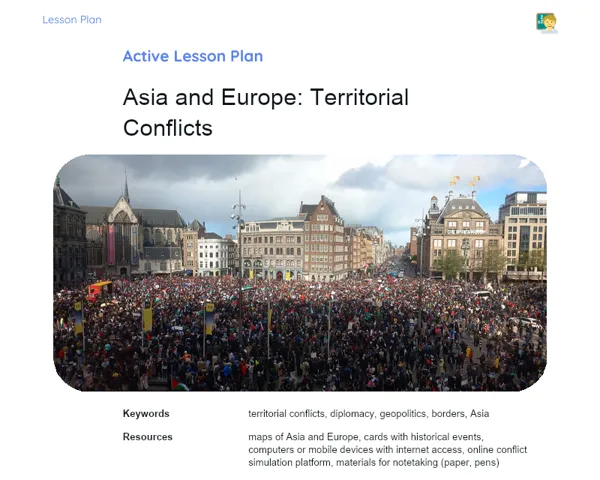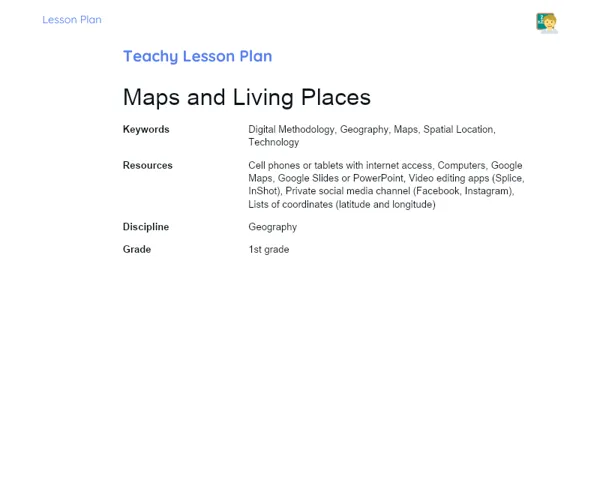Lesson Plan Teknis | Hydrography: Aquifers
| Palavras Chave | Hydrology, Aquifers, Biomes, Formation of Aquifers, Environmental Conservation, Contamination of Aquifers, Sustainable Use, Geography, Water Resources, Aquifer Model, Market Connection, Practical Activities |
| Materiais Necessários | Video about the Guarani Aquifer, Clear containers, Sand, Stones, Clay, Water, Food colouring, Syringes |
Objective
Duration: 10 - 15 minutes
The aim of this stage is to lay down a solid foundation regarding how aquifers form and their significance, particularly within the context of biomes and life in general. By grasping these concepts, learners will be equipped with practical skills applicable in real-world scenarios, such as water resource management and environmental conservation, thus connecting the lesson content to real market needs.
Objective Utama:
1. Understand how aquifers are formed.
2. Recognise the vital role of aquifers in supporting biomes.
3. Explore the influence of hydrology on life in various biomes.
Objective Sampingan:
- Develop research and critical thinking skills related to water resources.
- Promote environmental awareness and the sustainable use of our water resources.
Introduction
Duration: (15 - 20 minutes)
Purpose: The objective of this phase is to introduce the subject in an engaging and contextual manner, igniting students' curiosity about aquifers and their significance. By associating the content with real-life situations and job opportunities, the lesson becomes more pertinent and meaningful for learners, preparing them for the hands-on activities that will follow.
Curiosities and Market Connection
Curiosities and Market Connection: Did you know that the Guarani Aquifer, found in South America, is among the largest sources of freshwater in the world? It stretches across parts of Brazil, Argentina, Paraguay, and Uruguay, with an estimated capacity of 37,000 cubic kilometres of water. In the job market, professionals like geologists, environmental engineers, and hydrologists are crucial for the exploration, monitoring, and sustainable management of these water resources. Sanitation companies, agriculture, and various industries depend on these experts to ensure safe and efficient access to groundwater.
Contextualization
Contextualization: Water is a precious resource essential for life, and it exists in various forms in nature. Among these, aquifers are integral in maintaining ecosystems and supplying water to millions across the globe. Aquifers are underground reservoirs that develop over thousands of years and are crucial for agriculture, human consumption, and industry. Understanding the formation and function of these reservoirs helps us appreciate and protect this invaluable resource.
Initial Activity
Initial Activity: Show a short video (3-5 minutes) on the Guarani Aquifer, emphasising its significance and preservation challenges. Following the video, pose an engaging question to the students: 'In what ways might aquifer contamination affect our lives and the environment?'. Facilitate a brief discussion to draw students into the topic.
Development
Duration: (40 - 45 minutes)
The aim of this stage is to deepen students' understanding of aquifers through practical and reflective activities. Constructing an aquifer model allows learners to visualise its formation and operations, fostering practical and critical skills applicable in real situations. The fixation exercises help assess students’ grasp and reinforce learned concepts, preparing them for real-world applications.
Topics
1. Formation of Aquifers
2. Importance of Aquifers for Biomes
3. Sustainable Use of Water Resources
4. Impact of Aquifer Contamination
Thoughts on the Subject
Guide learners to contemplate how aquifers impact local biodiversity and the economy. Ask: 'How can preserving aquifers benefit both natural ecosystems and human activities?' Encourage them to consider the interconnection between groundwater resources and life in their own environments.
Mini Challenge
Mini Challenge: Building an Aquifer Model
Pupils will be divided into groups to construct an aquifer model using simple materials like sand, stones, clay, and water. The aim of the activity is to illustrate the formation and functioning of an aquifer while emphasising the importance of preserving this resource.
1. Divide learners into groups of 4 to 5 members.
2. Distribute the necessary materials for each group: clear containers, sand, stones, clay, water, food colouring (to simulate pollution), and syringes (to simulate water extraction).
3. Ask groups to follow these steps:
4. Place a layer of stones at the bottom of the container.
5. Add a layer of sand on top of the stones.
6. Put a layer of clay over the sand.
7. Add another layer of sand on top of the clay.
8. Gradually pour water, observing how it seeps through the layers of sand and clay to reach the stones.
9. Use the syringe to simulate extracting water from the aquifer.
10. Drop a few drops of food colouring on the surface to simulate contamination and see how it spreads through the aquifer.
11. After constructing the model, guide students to discuss the following questions in their groups:
12. How does water move through the aquifer layers?
13. What occurs when water is extracted from the aquifer?
14. How does contamination propagate through the aquifer?
15. What actions can we take to protect aquifers from contamination?
To comprehend how aquifers are formed and function while reflecting on the significance of conserving and sustainably using groundwater resources.
**Duration: (30 - 35 minutes)
Evaluation Exercises
1. Describe the formation of aquifers and their importance for biomes.
2. Explain the impacts of aquifer contamination on human life and the environment.
3. List at least three professions focused on the management and preservation of groundwater resources.
4. Suggest measures to protect aquifers from contamination and ensure sustainable usage.
Conclusion
Duration: (10 - 15 minutes)
The aim of this stage is to consolidate students' learning by providing an opportunity for reflection and discussion regarding the knowledge acquired. By recapping key points and connecting theory with practice, students will internalise the content and understand its application in the real world, equipping them for future situations involving water resource management and conservation.
Discussion
💬 Discussion: Facilitate a discussion where students can reflect on what they learned during the lesson. Ask: 'What were the most surprising points about how aquifers form and their importance?'. Encourage students to share their thoughts on the impact of aquifer contamination and how careers in hydrology can contribute to preserving this vital resource. Promote reflection on the practical activities conducted, such as building the aquifer model, and how these experiences enhanced understanding of the topic.
Summary
📋 Summary: Recap the main content covered in the lesson, underscoring the formation of aquifers, their significance for biomes, and the repercussions of contamination. Reinforce the link between theory and practice, showing how the activities and mini-challenges elucidated these concepts.
Closing
🔚 Closing: Explain how the lesson merged theory with practical activities, offering a comprehensive perspective on aquifers. Stress the relevance of this topic in daily life, highlighting its applications in water resource management, agriculture, and sanitation. Wrap up the lesson by emphasising the importance of aquifer preservation for the sustainability of water resources and quality of life.


